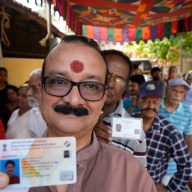Cynthia Baron directs the Master of Professional Studies in Digital Media program at Northeastern University. Like most graduate degrees of this kind, the Northeastern program only emerged in the past few years. She sat down with Metro to discuss this budding field of study.
Digital media studies are relatively new to the landscape of graduate degrees. Why have so many schools developed these programs?
I think it’s pretty obvious that it’s market-driven in the sense that more and more of our lives are touched by digital technology. There’s a big difference between understanding how to use a piece of software and why you would design it that way. And, when you put different processes together, it becomes very complicated. There wasn’t a place to study this in any one academic discipline. Schools wanted to look at this phenomenon as a whole, instead of trying to do it piecemeal with added classes here and there in other areas of study.
What’s the biggest misconception about graduate-level degrees in digital media?
People say, “Why do you need a degree in digital media? Couldn’t I just take courses to learn how to use software?” You could, but that doesn’t make you a digital media professional. That’s like me saying I know how to use Microsoft Word, so that makes me a writer.
What jobs do your students wind up in?
Interactive design, game design, Web design, handheld media products, digital video, photography, 3-D animation, Web-based journalism. But, often, people come to us from specific fields — programming, engineering, art, design, communications, teaching — and they’re looking to go back with a new skill set.
Are there fellowship opportunities in this field of study?
Fellowships in these areas are hard to come by. Most programs that do provide fellowships or TA positions offer them to a small number of students. The vast majority of students in digital media fund their education through student loans.
















